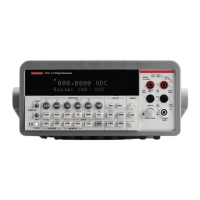Built-In Test overview
Built-In Test is used to test and exercise various circuits and components. The Built-In Tests
are listed in Table 2-18. Many of the tests are actual pass/fail type tests, while others are circuit
exercises that are used for subsequent tests. Each Built-In Test can be run manually. After a test
is manually run, operation is “frozen” to allow the technician to troubleshoot the circuit.
Using Built-In Test
There are several ways to run the Built-In Test, including the following recommended se-
quence:
1. Run the AUTO bit test (see “AUTO Testing”) and note the first (lowest numbered) test
that has failed. Always address the lowest numbered test failure first because that failure
could cause subsequent tests to fail.
2. Familiarize yourself with the failed circuit. See “Built-In Test Documentation” for trou-
bleshooting information. Be sure to read the documentation for the complete series. For
example, if test 202.4 fails, read the documentation for all 202 series tests.
3. Manually run the test that failed (see “MANUAL Testing”). Keep in mind that many of
the pass/fail type tests require that one or more circuit exercise tests be run first. Using
the manual step looping mode will “freeze” instrument operation after a test is run.
4. After manually running the test, use the test documentation and your troubleshooting ex-
pertise to locate the problem.
5. After repairing the instrument, start again at step 1 to check the integrity of the repair
and to see if there are any other failures.
2-18 Troubleshooting

